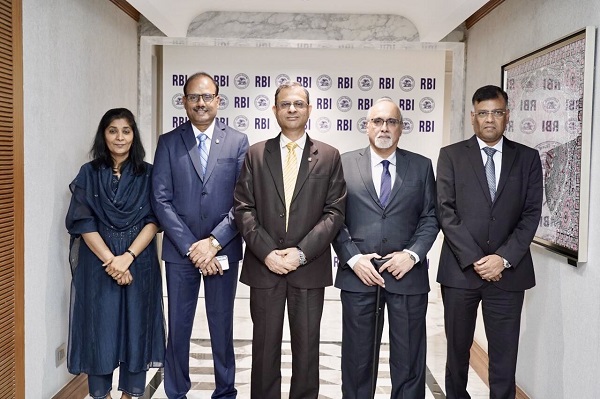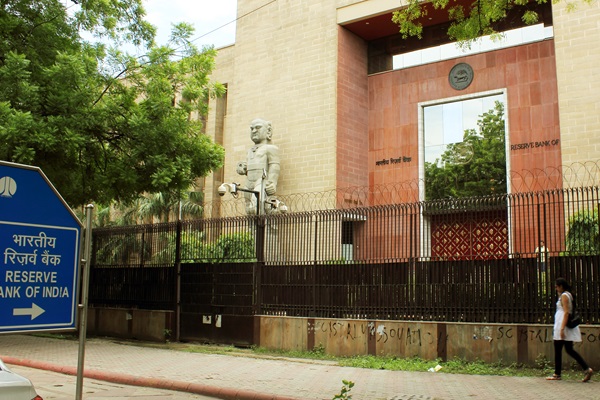.png)
Banks Poised to Challenge NBFCs As RBI Unshackles Restrictions
RBI relaxes capital market lending, acquisition financing norms and higher share lending limits for banks after decades of restrictions


By Krishnadevan V
Krishnadevan is Consulting Editor at BasisPoint Insight. He has worked in the equity markets, and been a journalist at ET, AFX News, Reuters TV and Cogencis.
October 1, 2025 at 10:10 AM IST
“Circumstances change, times change, requirements change…,” was Reserve Bank of India Governor Sanjay Malhotra explanation of the proposed regulatory changes for banks, with the central bank's plan to relax capital market exposure norms for banks being the most talked about.
This change, announced with the October monetary policy announcement, represents both an overdue acknowledgement and an opportune moment. After years of restrictive regulations that kept banks on the sidelines of India's booming capital markets, the RBI finally acknowledged that blanket bans breed missed business and that specific safeguards serve better.
The RBI's proposal of more bank financing limits for corporate acquisitions, enhance lending limits against securities, and removal of ceilings on listed debt securities is a shift from its conservative stance. Malhotra described the regulatory changes as “balanced, calibrated, thought-out and considered,” reinforcing the central bank’s commitment to price stability and financial stability.
This liberalisation comes along with the withdrawal of the 2016 Guidelines on Enhancing Credit Supply for Large Borrowers, signalling the regulator's confidence in the banking system's risk management capabilities. India's capital markets have matured dramatically, and now have robust regulatory frameworks, improved corporate governance, and enhanced market infrastructure.
The restrictive framework strengthened after the 2008 global financial crisis has served its purpose during vulnerable times. Banks’ capital market exposures were capped at 40% of net worth, IPO financing faced severe limitations, and acquisition funding remained largely prohibited, to prevent reckless lending.
A deputy governor, addressing the increase in limits for loans against shares, pointed out that the limits were initially set in 1998 and the current changes merely factor in inflation, highlighting how outdated parameters had become divorced from economic reality.
The restrictions created unintended consequences. Indian banks were largely at the sidelines as NBFCs captured lucrative capital market opportunities, foreign banks dominated acquisition financing through offshore structures, and domestic corporates turned to expensive alternative funding sources.
Corporate acquisition financing in India became dominated by NBFCs and foreign lenders operating through complex offshore structures, while domestic banks, despite having the strongest balance sheets and risk management systems, remained relegated to vanilla lending. This not only hurt banks' profitability but also deprived the economy of more efficient capital allocation.
Today's banking system bears little resemblance to its pre-crisis avatar. Capital adequacy ratios have strengthened significantly, with most banks maintaining buffers well above prescribed level. Risk management systems have evolved from basic compliance tools to sophisticated predictive frameworks. Corporate governance standards have improved dramatically, while market infrastructure from settlement systems to rating mechanisms has achieved global standards.
The capital markets too has matured. Listed companies face stringent disclosure requirements, institutional investors dominate trading volumes, and market-making mechanisms ensure better price discovery. The earlier concerns about artificial demand creation and market manipulation, which justified harsh restrictions on bank participation, have largely been addressed.
Safeguards Imperative
Yet enthusiasm must be tempered with pragmatism. The RBI's proposal to implement a “principle-based framework” sounds encouraging, but principles need parameters. The central bank's emphasis on "balanced" and “calibrated” changes underscores that enhanced flexibility does not mean regulatory relaxation.
Several critical safeguards deserve immediate attention. First, banks must maintain sector-wise exposure limits that prevent dangerous concentration in volatile segments. Second, lending against securities should carry dynamic margin requirements that adjust to market volatility rather than static percentages. Third, acquisition financing should be subject to strict due diligence requirements and prohibit leveraged buyouts that could destabilise corporate structures.
The earlier restrictions on IPO financing, implemented after excessive leveraging created artificial market distortions, offer valuable lessons. Banks entering capital market lending must have robust systems to prevent the kind of oversubscription madness that characterised the pre-restriction era. Individual borrower limits, mandatory cooling-off periods, and stress-testing requirements should form the framework's foundation.
Better Late
The timing question deserves nuanced analysis. There could be a view that Indian banks have missed years of opportunities. The concern is valid, given that some of India's largest corporate acquisitions over the past decade relied entirely on non-bank financing sources.
However, the “better late than never” argument carries stronger weight. Governor Malhotra's observation that “…nothing should be frozen in time” captures the essence of the proposed change, that banking regulations should evolve with market conditions. The RBI's cautious approach during the post-crisis decade helped build a more resilient banking system. Now, gradual easing makes strategic sense.
The RBI's forthcoming draft guidelines will determine whether this initiative succeeds or stumbles. A phased approach could be the way to go. Start with well-established banks having strong risk management systems, limit exposure percentages initially, and expand gradually based on market behaviour. Regular stress-testing, enhanced reporting requirements, and periodic review mechanisms should be non-negotiable components.
The withdrawal of large borrower guidelines also requires careful monitoring. While these restrictions may have outlived their utility, their removal shouldn't signal abandonment of concentration risk management. Banks must strengthen internal frameworks that prevent dangerous exposure to individual corporate groups.
The RBI’s announcements represents more than policy adjustment. It is acknowledgement that Indian financial markets have matured enough to handle responsible bank participation in capital market activities. If done right, this could mark the beginning of an efficient financial system where banks reclaim their rightful role in capital market intermediation.
Also read:
RBI’s Insulated Optimism Jars with Ground Reality
RBI Breaks Old Orthodoxy with Regulatory Measures
RBI Reopens the Door to Accommodation
Partly Monetary Policy, Largely Credit Policy
Is the Hunt for a Terminal Repo Rate a Distraction?



